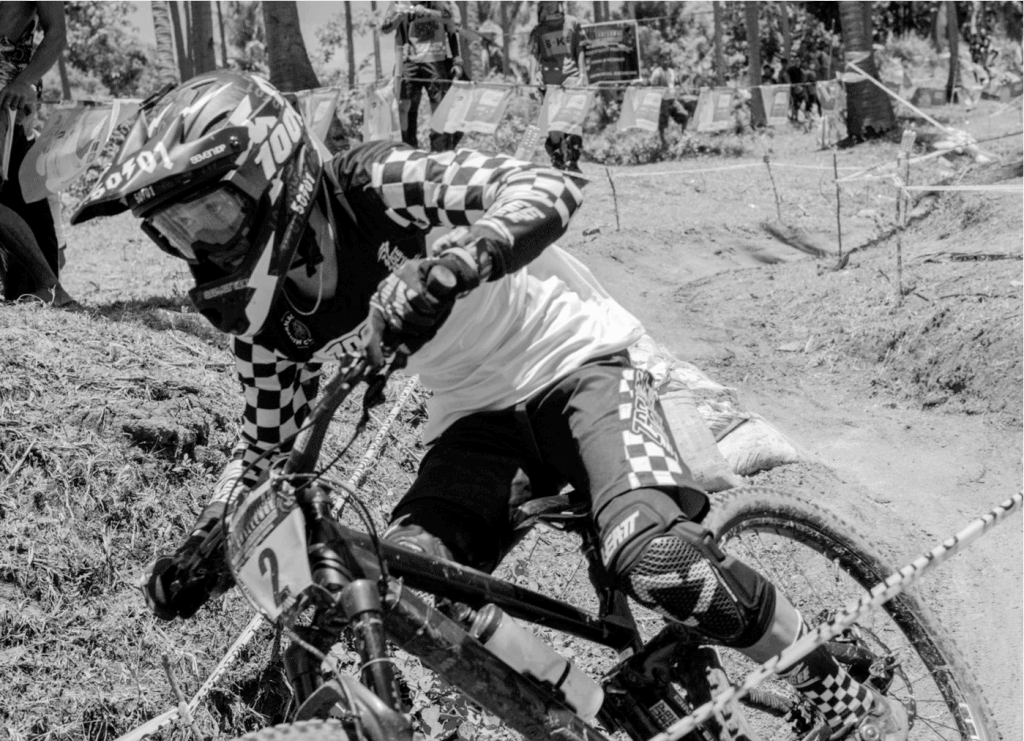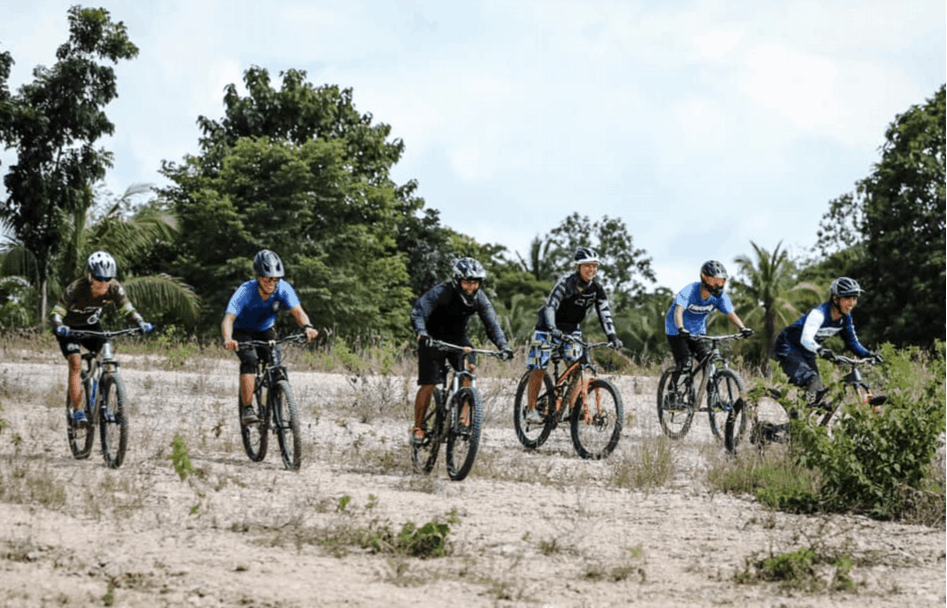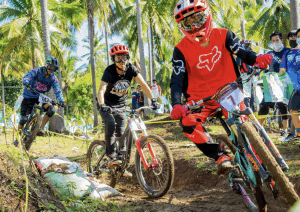Last Updated on March 9, 2022
For almost every cyclist, reaching their first-century ride is a big milestone in their biking journey. Every step towards that goal is an achievement in itself. Anyone can achieve this goal if they put the right effort into it.
Biking for long distances seems like an easy feat, but it is not. There are certain things that you would need to prepare for. Like your endurance for example.
Regardless if this is your first century or your 30th, the same set of training routines may apply. And this is quite dependent as well on how often you go out on rides.
If you are a weekend warrior, an avid biker, or an indoor session biking type, you may want to consider adjusting your training regimen depending on your needs. Although it may all be applicable, there are certainly some aspects that would fit your need.
What Is Special About Doing a Century Ride?
For many people, this is just a common number. But cyclists sometimes use these milestones as sort of a gauge.

It could be a gauge for their fitness, or how far they have gone with their biking journey. For some, it is a bragging right. A barrier that you aim to breach as you add more miles to your biking journey.
Best Ways to Train for a Century Ride
Know what you are getting into
The first step to this journey is commitment. That means that you are fully aware of the feat that you are getting into. This goal may feel intimidating to new riders thus motivation plays an important role.
One of the easiest ways to get past this stage is to do the activity with a partner or a group. This way, you are not only committing to a ride but your partners as well.
To recap, know what exactly you are getting into. Look at the route and think about what the possible challenges might be. Once you get the right mindset, move forward and commit religiously to your training routine.
Do goal setting
Now that you have familiarized yourself with the big picture and the challenges that you will undertake, it is time to set some goals. What you can do is create a gauge using your past performances.
If you want to go with the tech stuff, you can monitor your performance through ride trackers and fitness bands. Using your tracking data, try to familiarize what your average riding speed is, your power zones, and your heart rate.
By doing so, it will give you a ballpark idea as to what your limits are. So for example, if the average riding speed of all your rides with the same nature as the ride is 16 mph, you can use this metric in computing how long your ride is going to take for about an hour.
So if the total time would take around 6 hours and 50 minutes, a good goal for improvement would be to push for let’s say, 20 minutes less. What you can do then is do training rides while maintaining a certain average speed that would make you hit your goal at 6 hours and 30 minutes. This can be easily monitored by installing a speedometer on your bike and tracking your progress through GPS apps.
You can also set non-result-oriented goals as well. Like training yourself to keep the right mindset, aim for your nutritional goals, and time management. Evaluate yourself in all areas and look for areas that need to be improved.
Lastly, get yourself a support system. Whether this is a fitness coach, a training buddy, or someone who can share your progress and goals with. Remember, no athlete trains alone.
Focus on your cycling zones
Pacing is very important in terms of cyclin and this is normally measured by levels of exertion zones. There are several ways to measure these zones and you can either go by feel, through monitoring your heart rate or through measuring your power output.
Using your power output and heart rate is probably the most accurate way to measure your zones. But it is also equally important for a rider to know the physical sensations of each of the exertion zones thus you also need to familiarize it by feel.
The more you know about your zone, the more you can push yourself towards your limit.
Have the right nutrition
As discussed earlier, cycling for long periods means that you need to maintain a certain power output for a longer period of time. That is why you would need the correct fuel for it. Because if you fail to fuel your body properly regardless of how good your training has been, you will only end up being hypoglycemic.
So here is a quick guide that will give you an idea of what you would need as fuel before, during, and after your ride for recovery.
Carbohydrates
Carbohydrates are our body’s main source of energy and would be great for any physical activity. What you need to do is to get enough carbohydrates before and during century rides. You can eat simple carbohydrates like chews and energy gels.
These easy-to-eat food are great for quick and intense rides. But for longer rides, you would need to opt for a bit more complex carbohydrate sources like energy bars which include fiber and fat.
Fat
Fat is a fairly good source of energy as well. But only consume fat as a compliment to your carbohydrate supply. Although most of us may have an unlimited fat source in our bodies, it does not mean that we avoid it during the training period.
A little source of healthy and unsaturated fats from avocado, salmon, oils, and nuts will give your body the extra fuel that it needs once your carbohydrate source has run out.
Protein
For every physical activity, especially training sessions, muscles tend to get worn down. Our body needs protein to rebuild these worn-out muscles and develop stronger ones.
You can get your protein needs from meat or from amino acids that can be sourced out of plants and vegetables.
Maintain proper hydration
For any endurance activity, hydration is always the key. Consuming water during your rides will replace the lost electrolytes and moisture thus allowing your muscles to keep on functioning a optimum performance.
If in case you fail to hydrate adequately, you will immediately feel that your performance would drastically fall. To give you an idea of how to hydrate properly, you can refer to this guide below:
- Aim to replenish around 22oz of water for an hour of training, and 1.5 bottles if it is hot.
- Consume mixed drinks to quickly replenish your electrolytes source.
- Not all mixed drinks work for you, evaluate what you feel suits you best.
Base Training
This refers to long, easy and low intensity rides that you would need to perform as part of your training cycle. What a training plan does is train your body to increase its aerobic capacity.
This activity also teaches your body to learn how to metabolize fat as a source of fuel. You need to start training because this is important when you are aiming for a long ride or an organized ride with experienced cyclists. Remember that our carbohydrate supplies are limited to what we can carry. You should also make sure that you can comfortably ride your bike so you can maintain active recovery. You can do it by including this in your century training plan, having interval training, or by riding consistently for an upcoming big ride.
Ride Week Recovery and Preparation
A week before your century ride schedule, taper down on your training. This time, you will allow your body to absorb all the stress that it had to endure during training and recover from it.

It would also help if you have your own century training plan for an upcoming speed ride, long rides, or endurance training.
This is also a good time to do the final checklist for your long training rides.
- Get your bike checked and tuned.
- Review the routes and familiarize the sections.
- Do a grocery run for all of the supplies that you would need for your ride.
- Know the weather forecast.
- Do a final mental prep and plan.
Conclusion
Physical preparation is only 30% of what you would need to endure during the ride. 70% of it would be how mentally prepared you are. Knowing what you are capable of is the key and once you are ready, your first ever or your nth century ride will be well within your grasp.
